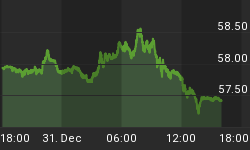In times of recession, where is likely to be the best asset class? This question is difficult to answer, as there are usually some assets appreciating and some assets depreciating at any given time, whether that time is in the midst of an expansionary business cycle phase or a recessionary business cycle phase. And the question is even more difficult to answer consistently on a long-term basis, as history usually rhymes but does not repeat exactly.
So what can we say or determine as to potential assets that may do well in times of recession? Are there any such asset classes or even specific assets?
For some insight into this question, we refer our readers to a recent research study done by Gary Gorton and K. Geert Rouwenhorst entitled "Facts and Fantasies about Commodity Futures"[1]. This research study is an excellent and very fascinating look at a number of considerations and historical patters with regards to commodities as an asset class relative to stocks and bonds.
In order to look at times of recession, we must have a generally accepted definition and understanding. For this, the research study refers to the National Bureau of Economic Research (NBER). The NBER is a private, nonprofit economic research consortium which dates business cycles in the United States by identifying business cycle peaks and troughs.[2] In the NBER view, business cycles go through four phases: early expansion, late expansion, early recession, and late recession. Expansion phases clearly correspond to economic expansions and recession phases correspond to economic recessions.
In terms of where we are now in the business cycle phases, this is always difficult to determine. There are various indications that we may now be in the late expansion of the economic expansion taking place for the last few years, or perhaps we may be at the peak between the late expansion and the early recession. Indeed, Jim Puplava writes in the Market Wrap that "We are now at the peak of an economic cycle which means we are likely to head into a recession in the next 12 months"[3]...or almost there as the US central bank of the Federal Reserve Board continues to raise interest rates to the point of pricking the many financial asset bubbles in current bloom. In any case, we present here a broad scope review of what could be the historically better asset classes during the late expansion, early recession, and late recession business cycles.
The research study posts results of the stock, bond, and commodity futures performance over the business cycles from July 1959 to March 2004. In the late expansion business cycle phase, the highest performing asset is noted as copper; and in general, the metals and energy commodities have done well during this cycle phase. This is to be expected, as energy and materials would be necessary for economic business expansion.
What is more interesting is the top 6 assets in the early recession business cycle phase. They are as follows:
| Commodity | Historical Average Percentage Gain in Early Recessionary Business Phase Cycle |
| Sugar | 54.3% |
| Soybean Oil | 37.2% |
| Crude Oil | 26.3% |
| Unleaded Gas | 23.6% |
| Coffee | 21.2% |
| Cocoa | 18.6% |
Note that these commodities did better than a variety of other commodities researched as well as stocks and bonds during the early recessionary business phase cycle.
Now for the late parts of an economic business recession, if we look at the same set of these 6 commodities, we find that all 6 except for sugar and soybean oil yielded negative returns. During the late recessionary business cycle phase, the following commodities returned positive yields: corn, wheat, oats, lean hogs, port bellies, feeder cattle, soybeans, soybean oil, soybean meal, sugar, and gold. Other commodities, such as energy and base metals appear to underperform - and this would make sense in a full-blown recessionary environment. And during this phase cycle, bonds performed quite well although overall during the entire recessionary period, stocks yielded a paltry average of 1.7% yield and bonds yielded an average of 12.1%, according to the research study. During the late recessionary business phase cycle, the top commodities were:
| Commodity | Historical Average Percentage Gain in Late Recessionary Business Phase Cycle |
| Oats | 31.3% |
| Pork Bellies | 30.4% |
| Sugar | 26.5% |
| Soybean Oil | 22.1% |
| Gold | 14.0% |
Thus we come to a similar conclusion overall that, in general, it would appear that the most favorably performing sequence of investing in asset classes in the three business cycle phases we are considering are as follows:
| Late Expansion | Early Recession | Late Recession |
| • Energy Commodities • Metals Commodities | • Breakfast Commodities - sugar, coffee • Oil and gasoline • Soybean Oil • Cocoa | • Agricultural Commodities in general • Gold |
In sum, given the above asset classes for the various business phase cycles based on the historical data reviewed and compiled in the research study, it would appear that investments in the agricultural commodities during recessionary times, from early in the recession to late in the recession, would yield the highest overall returns.
Notes:
[1] "Facts and Fantasies about Commodity Futures", 14 June 2004 draft, by Gary Gorton of the Wharton School, University of Pennsylvania and the National Bureau of Economic Research and by K. Geert Rouwenhorst, School of Management at Yale University.
[2] http://www.nber.org/cycles.html
[3] http://www.financialsense.com/Market/wrapup.htm, Jim Puplava, 24 January 2005.
















